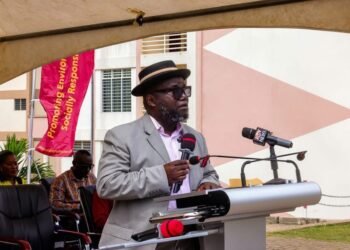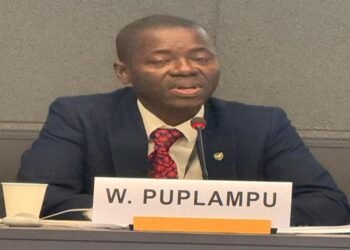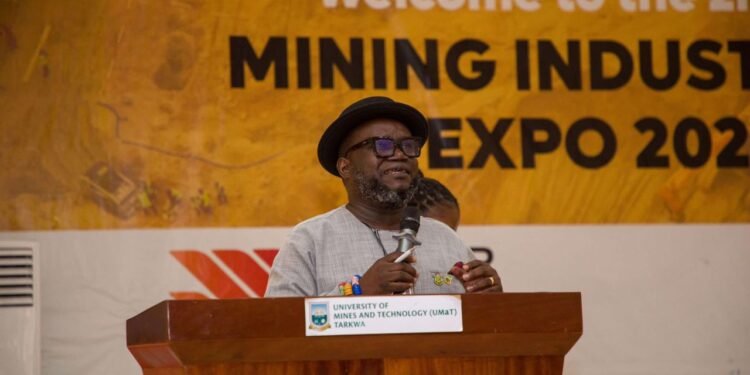The Africa Sustainable Energy Centre (ASEC) has raised red flags over the government’s 2026 Budget, warning that despite Ghana’s celebrated fiscal recovery, deep structural weaknesses in the energy sector threaten to reverse recent economic gains.
The concerns emerged after ASEC completed a detailed review of the 2026 Budget Statement presented by Finance Minister Dr Cassiel Ato Forson. The budget, themed “Resetting for Growth, Jobs, and Economic Transformation,” has been widely applauded for stabilising the economy.
Public debt has dropped significantly, the cedi has appreciated by nearly 35%, and the country recorded a primary balance surplus of 1.6% of GDP, marking what many consider Ghana’s strongest fiscal turnaround in a decade.
But ASEC warns that this stability is fragile. “A deeper dive into the budget reveals that this hard-won stability is perched precariously on a time bomb: the energy sector,” the think tank stressed.
ASEC acknowledged government efforts such as renegotiated energy debts, which saved over $250 million, and improvements in ECG’s revenue collection up 90% due to strict enforcement of the Cash Waterfall Mechanism. Yet, it insists that “the structural haemorrhage remains unaddressed.”
GH¢20 Billion Energy Commitments Raise Alarm
ASEC identified four systemic weaknesses in the 2026 Budget, beginning with the GH¢20 billion committed to the power sector next year. The allocation includes GH¢15.2 billion for energy sector shortfall payments and GH¢4.8 billion for servicing legacy IPP debt.
While clearing legacy debts is unavoidable, ASEC argues that the shortfall payments point to chronic inefficiencies within ECG. The group emphasised that the budget does not tie these large injections to mandatory reforms or targets.
“By continuing to cover this deficit without linking the massive fiscal injection to performance metrics, the government is effectively transforming a temporary rescue measure into an institutionalised subsidy.”
Africa Sustainable Energy Centre (ASEC)
According to the think tank, the absence of time-bound, quantifiable targets for reducing Technical and Commercial (T&C) losses, a key driver of the sector’s financial woes guarantees that the deficit will reappear in the 2027 Budget.
Risky Proposal on Ghana Petroleum Funds
ASEC’s second major concern is the government’s plan to revise the investment policy of the Ghana Petroleum Funds (GPFs), allowing them to be invested in domestic commercial energy projects.
The GPFs, held in US dollars, serve as Ghana’s shock absorbers against external volatility such as commodity price swings and currency depreciation.
While the government argues that current returns about 1% annually are too low, ASEC cautioned that diverting these funds into local commercial ventures “compromises the Funds’ primary stabilisation role.”
The group emphasised that investing sovereign wealth in the historically distressed energy sector exposes national savings to “localised commercial risk” and weakens Ghana’s ability to withstand external shocks
Concerns Over New 1,200 MW Thermal Plant
The third loophole highlighted by ASEC is the government’s plan to begin constructing a 1,200 MW state-owned thermal power plant in 2026.
ASEC says the move risks repeating the exact policy mistakes that created Ghana’s US$1.4 billion legacy energy debt, which stemmed largely from excess generation capacity.
Although gas supply is projected to improve, boosted by an additional 150 MMscf/day from Jubilee and OCTP, the underlying distribution and revenue challenges remain unresolved.
“This strategy suggests a continued policy bias towards state-led generation projects over foundational distribution efficiency reforms.”
Africa Sustainable Energy Centre (ASEC)
Without improving ECG’s collection efficiency and reducing T&C losses, ASEC cautioned that the new plant could saddle the state with additional fixed capacity charges, intensifying future fiscal pressures.
The fourth risk, ASEC noted, lies in the government’s persistent failure to utilise petroleum revenues allocated through the Annual Budget Funding Amount (ABFA).
As of September 2025, Ghana had US$290 million in available ABFA funds, yet only 0.43% had been used.
“This failure highlights chronic weaknesses in public financial management, particularly in project preparation and disbursement efficiency.”
Africa Sustainable Energy Centre (ASEC)
ASEC warned that the inability to deploy resources undermines projects like the GH¢30 billion Big Push Infrastructure Programme, stalling job creation and economic expansion.
ASEC’s Recommendations for Stability
To prevent the energy sector from derailing Ghana’s economic recovery, ASEC proposed several strategic interventions.
The centre urged government to tie the GH¢15.2 billion shortfall allocation to performance-based targets, insisting that ECG must meet quarterly T&C reduction milestones to qualify for funds.
It also called for an accelerated rollout of private sector participation in ECG concessions, arguing that shifting commercial risk to the private sector is critical for fiscal stability.
ASEC further recommended preserving the Ghana Petroleum Funds’ current investment mandates, warning that domestic commercial investments would “cannibalise a crucial financial buffer.” It also urged government to delay commitments to the 1,200 MW plant until an updated Capacity Needs Assessment is completed.
With Ghana’s macroeconomic rebound still delicate, ASEC concluded that “anchoring stability with structural integrity” is essential. Without decisive reforms, the energy sector could threaten the gains achieved under the 2025 stabilisation programme, putting Ghana at risk of yet another fiscal setback.
READ ALSO: 2026 Budget: Ghana’s Economy Rebounds as Debt Accumulation Drops to Neg. 13.3%























